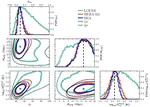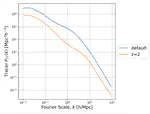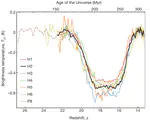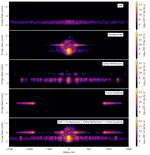Code
21cmMC uses 21cmFAST to compare observations with theory, and predict astrophysical and cosmological parameters. This is a beast of a process, since it must run thousands of cosmological simulations to generate the predictions. Thus, 21cmMC is highly parallelized with MPI and is geared to run on supercomputers.
21cmMC was originally written by Brad Greig. My primary role has been to integrate it with 21cmFAST v3+, and to improve the interface and extensibility.
I am the primary developer of a new software pipeline for EDGES data. This involves a stack of codes for data reading/writing, calibration, analysis and parameter estimation.
The software is developed by a small team, and I am overseeing the development, in order to transform the EDGES analysis pipeline into something that is highly transparent, reproducible and accurate.
The halo model is a super-convenient analytic tool to predict the spatial distribution of “things” in the Universe. It uses dark matter halos as the basic scaffolding, and then associates other things with the halos — eg. galaxies or diffuse gas. The predictions can be compared to observations of the spatial layout of galaxies, for example, to determine either cosmological parameters or properties of the galaxies themselves.
halomod provides an extremely simple – but quite comprehensive and easy to extend and manipulate – framework for computing quantities from the halo model. It builds on hmf (another of my codes) to do this.
A small Python code that implements a way to do a very specific integral transform — the Hankel transform.
This transform is particularly common in astrophysics and cosmology (for instance, it is required to transform a correlation function into a power spectrum and vice versa). It is also a bit of a tricky integral to do, because it is highly oscillatory. This code implements a neat idea (not mine!) that is able to accurately perform this integral with good computational performance (in most cases).
hera_sim is one of the primary codes I contribute to in the HERA software suite. It is geared at simulating HERA-specific instrumental effects (thermal noise, cross-coupling, cable reflections) and injecting them into simulated visibilities.
This code is central to validating HERA’s analysis pipeline (as discussed in the linked paper).









